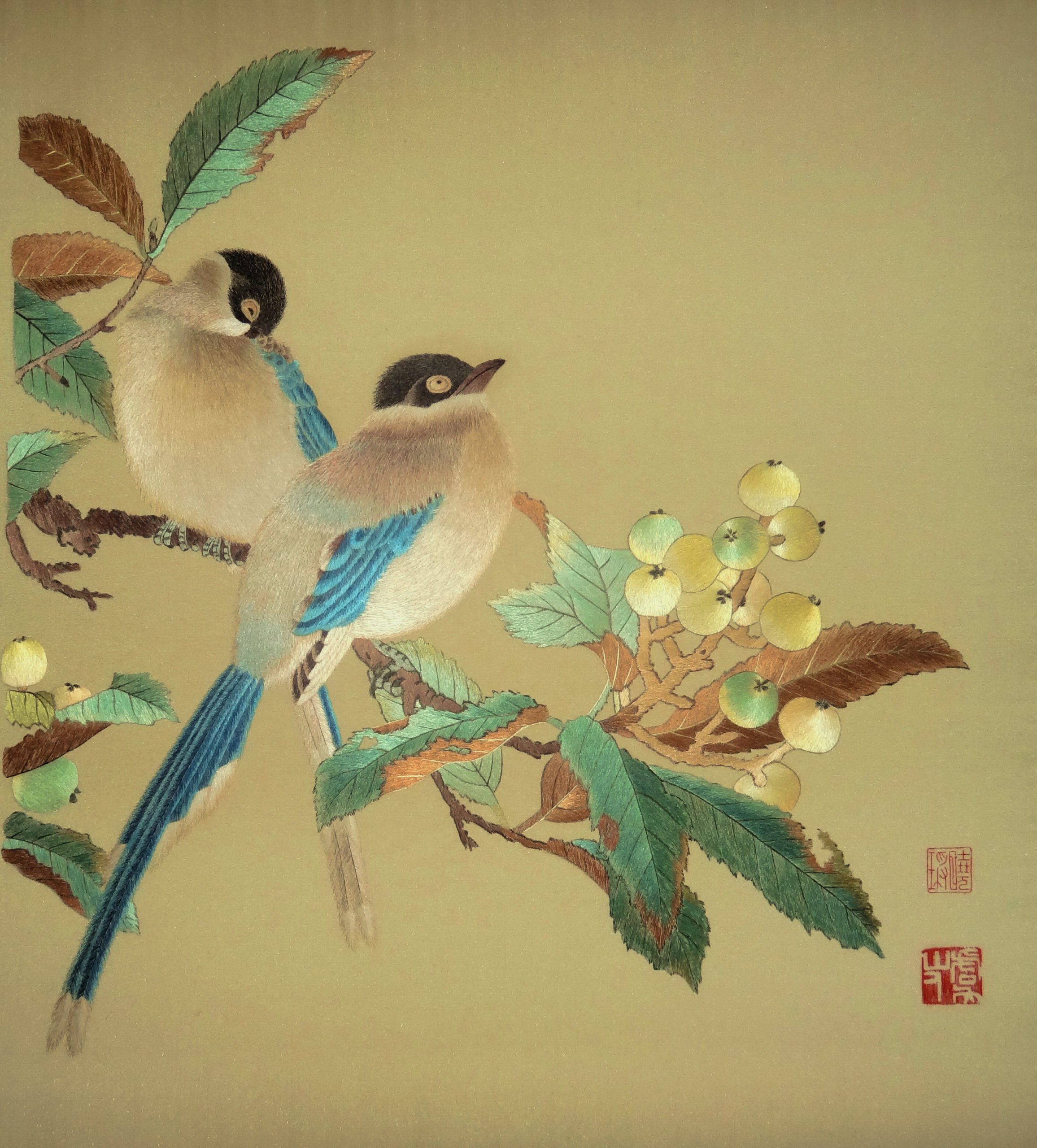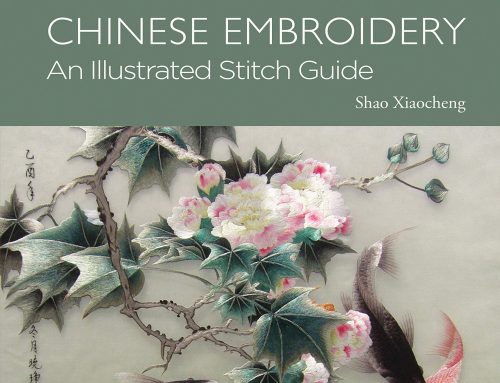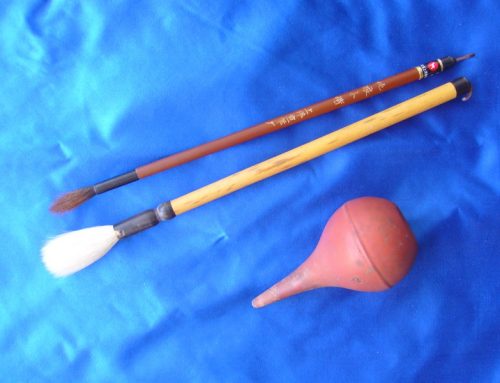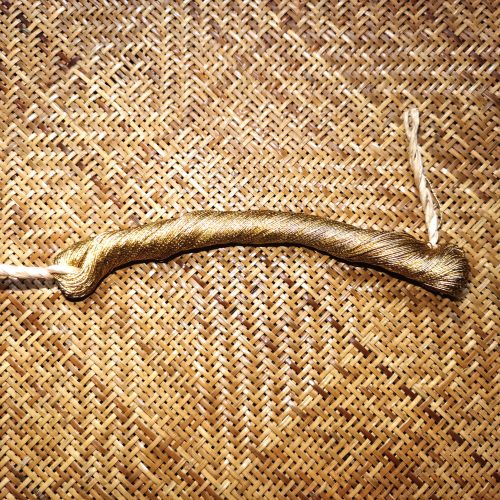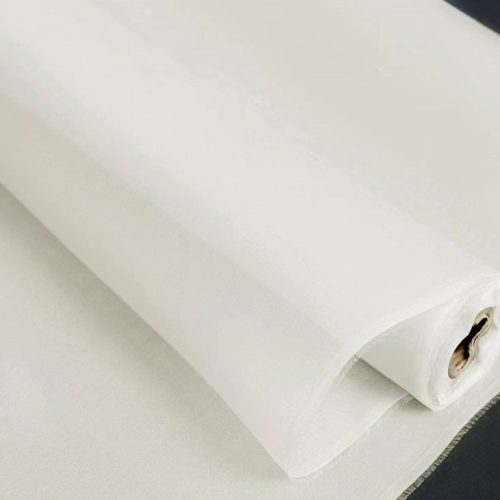Rediscovering the Beauty of Chinese Art Embroidery
Chinese art appreciation embroidery is a deeply cultural and skillfully crafted form of handiwork. This type of embroidery is not merely a display of technique, but a profound expression of culture and aesthetics. The artists creating these pieces often span multiple disciplines, incorporating knowledge of painting, literature, and history, and embedding personal emotions and cultural meanings into every stitch through a method of “self-drawing and self-embroidery.” These works are uniquely crafted, not for mass production or commercial gain, but for artistic expression. Each piece reflects the creator’s careful consideration of craftsmanship and aesthetics, often regarded as priceless treasures in the art market, and highly valued by collectors and art enthusiasts. The modern continuation of traditional embroidery art not only showcases the aesthetic tastes and cultural confidence of the Chinese people but also provides rich material and profound insights for global cultural and artistic exchanges.
Historically, art appreciation embroidery in China is the precursor to the famous Four Great Embroideries (Su embroidery, Xiang embroidery, Shu embroidery, and Yue embroidery). This high-level art form not only demonstrates the pinnacle of embroidery skills but also provides substantial cultural and technical nourishment for the later production-oriented famous embroideries. The exquisite craftsmanship and unique creative methods of these art embroideries have laid a solid foundation for the development of the Four Great Embroideries, influencing their style and techniques.
Despite facing numerous challenges in modern society, such as changing market demands and difficulties in the transmission of traditional skills, a few embroidery artists continue to practice this fine art. For instance, the contemporary artist Shao Xiaocheng is a notable figure in this field. She not only masters traditional embroidery skills but also continuously explores and innovates, blending traditional techniques with modern aesthetics to advance the development and modern continuation of this art form. The work of these artists not only maintains the vitality of traditional skills but also makes significant contributions to global artistic and cultural exchanges.
Restoring the cultural ecosystem of these embroideriqes is no easy task. Shao Xiaocheng has conducted extensive research to revive the art of Song Dynasty court embroidery. Her efforts involve meticulous study of historical techniques and patterns, as well as the cultural context in which these embroideries were created. By bringing back these ancient practices, Shao Xiaocheng not only preserves a significant part of Chinese cultural heritage but also reintroduces the sophisticated aesthetics and intricate skills of Song Dynasty embroidery to the modern world.
Her work is pivotal in educating both new generations of artisans and the public about the value and beauty of traditional Chinese embroidery. This revival also helps maintain a tangible link to the past, ensuring that the rich tapestry of Chinese history and art continues to inspire and influence contemporary culture and artistry.
Indeed, the research and preservation efforts undertaken by Shao Xiaocheng in reviving Song Dynasty court embroidery provide a valuable model that can be applied to other embroidery styles around the world that are either extinct or on the verge of extinction. By conducting in-depth studies of historical materials, restoring ancient techniques, and incorporating modern technologies and materials, these precious handicrafts can be effectively protected and revived.
This approach not only helps to preserve cultural heritage but also enhances public awareness and appreciation of traditional crafts. Moreover, this cross-cultural preservation strategy can facilitate exchanges and learning between different cultures, increasing global recognition and respect for the value of handicrafts. Through international cooperation and knowledge sharing, traditional embroidery techniques from various cultural backgrounds can gain new vitality and broader recognition. This is not just about protecting techniques, but also about cherishing the shared cultural heritage of humanity.
中国的艺术欣赏型刺绣是一种深具文化底蕴和技艺精湛的手工艺术形式。这种刺绣不仅仅是技术的展现,更是一种文化和审美的深层表达。艺术家们在创作这类刺绣作品时,通常需要跨越多个学科,融合绘画、文学、历史等知识,通过“自绘自绣”的方式,将个人情感和文化寓意嵌入每一针一线中。这些作品通常是独一无二的,不为批量生产或商业利益而创作,而是为了艺术表达而生。每一件作品都是创作者对技艺和美学深思熟虑的结果,因其独特性和艺术性,在艺术市场上常被视为无价之宝,深受藏家和艺术爱好者的重视。这种对传统刺绣艺术的现代传承不仅展示了中国人的审美情趣和文化自信,也为全球文化艺术交流提供了丰富的素材和深刻的启示。中国的艺术欣赏型刺绣,实际上是苏绣等四大名绣(苏绣、湘绣、蜀绣、粤绣)的历史前身。这类高级刺绣艺术不仅展示了技艺的极致,而且为后来的生产型名绣提供了深厚的文化和技术养分。这些精湛的艺术刺绣,通过其独特的创作方法和文化内涵,为四大名绣的发展奠定了坚实的基础,影响了其风格和技术的演进。
尽管在现代社会,这种传统艺术形式面临诸多挑战,如市场需求变化和传统技艺传承难题,但依然有少数刺绣艺术家坚持这一精细艺术的创作。例如,现当代艺术家邵晓琤就是其中的代表。她不仅精通传统刺绣技艺,还在创作中不断探索和创新,将传统技艺与现代审美相结合,推动了这一艺术形式的发展和现代传承。这些艺术家的工作不仅保持了传统技艺的活力,也为全球艺术和文化交流做出了重要贡献。 请把这些话翻译成地道的英文。
恢复这些刺绣的文化生态绝非易事。邵晓琤进行了大量的研究工作,成功恢复了宋代宫廷艺术刺绣。她的努力包括对历史技术和图案的细致研究,以及创作这些刺绣的文化背景。通过重现这些古老的技艺,邵晓琤不仅保护了中国文化遗产的重要部分,还将宋代刺绣的精致美学和复杂技艺重新引入现代世界。
她的工作在教育新一代刺绣创作者和公众认识传统中国刺绣的价值与美感方面发挥了关键作用。这种复兴还有助于保持与过去的实际联系,确保中国丰富的历史和艺术继续启发和影响当代文化和艺术创作。
确实,邵晓琤在宋代宫廷刺绣复兴方面的研究与保护工作提供了一个宝贵的范例,这种方法完全可以应用于全球其他已经失传或濒临失传的刺绣流派。通过对历史材料的深入研究、恢复古老技艺,并结合现代技术和材料,可以有效地保护和复兴这些珍贵的手工艺术。
这种方法不仅有助于保存文化遗产,还能增强公众对传统手工艺的认识和欣赏。此外,这种跨文化的保护策略可以促进不同文化之间的交流与学习,增进全球范围内对手工艺价值的认识和尊重。通过国际合作和知识共享,全球多个文化背景下的传统刺绣技艺得以得到新的生命力和更广泛的认可。这不仅是对技艺的保护,更是对全人类共同文化遗产的珍视。
